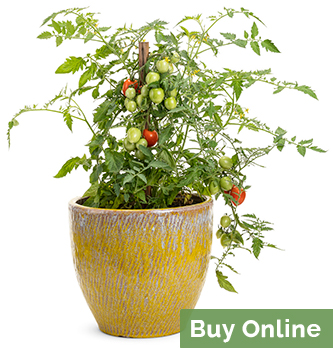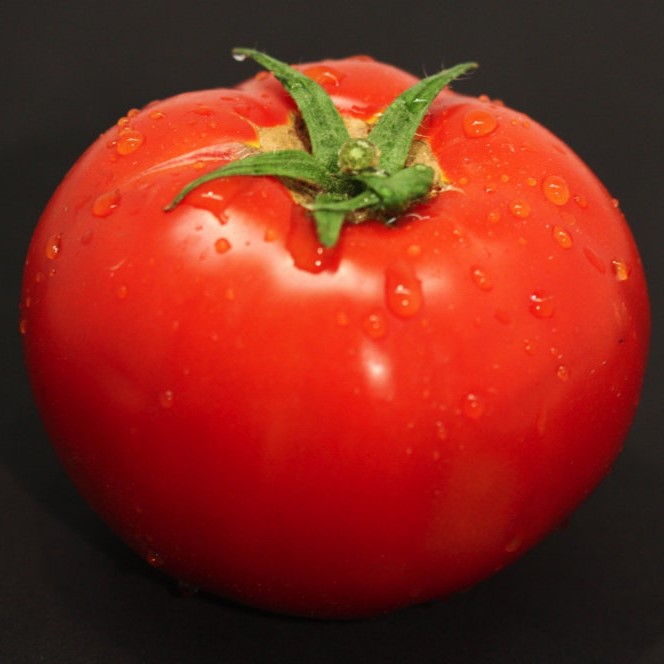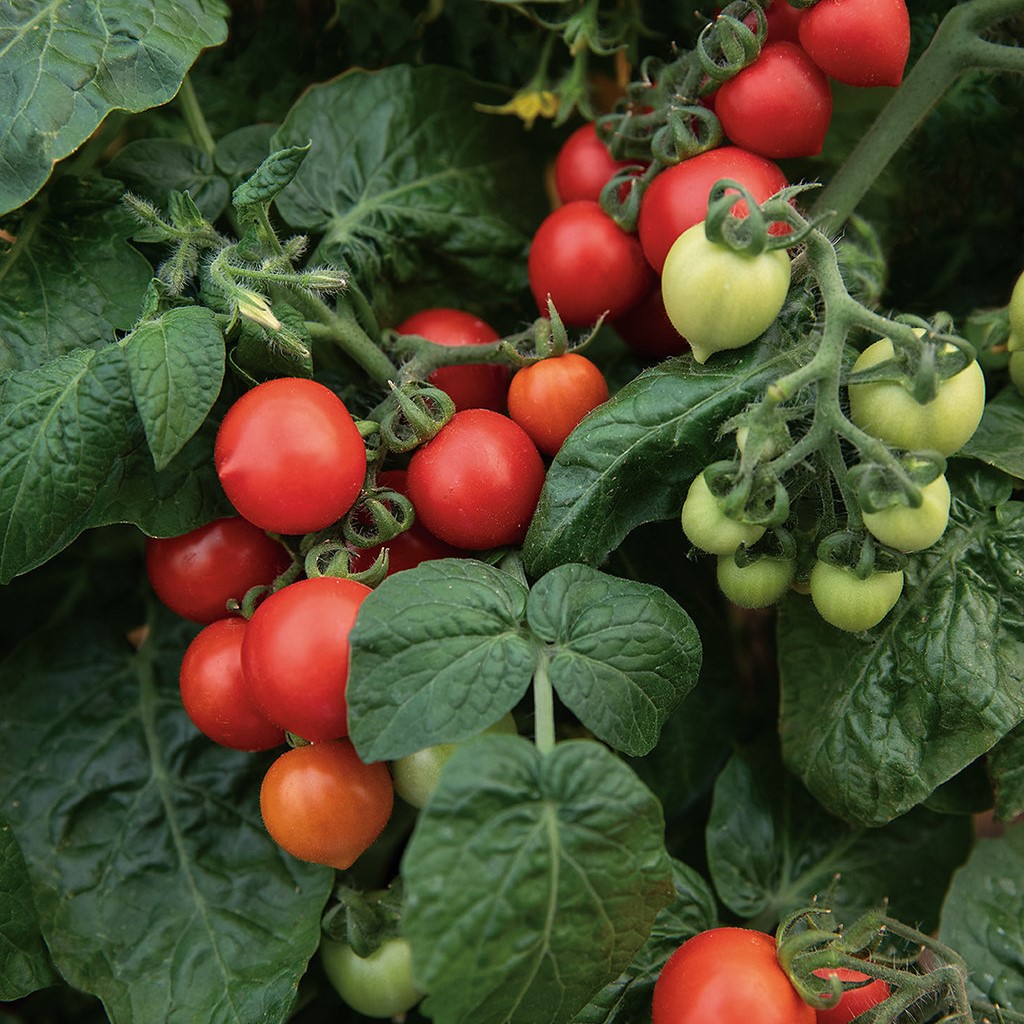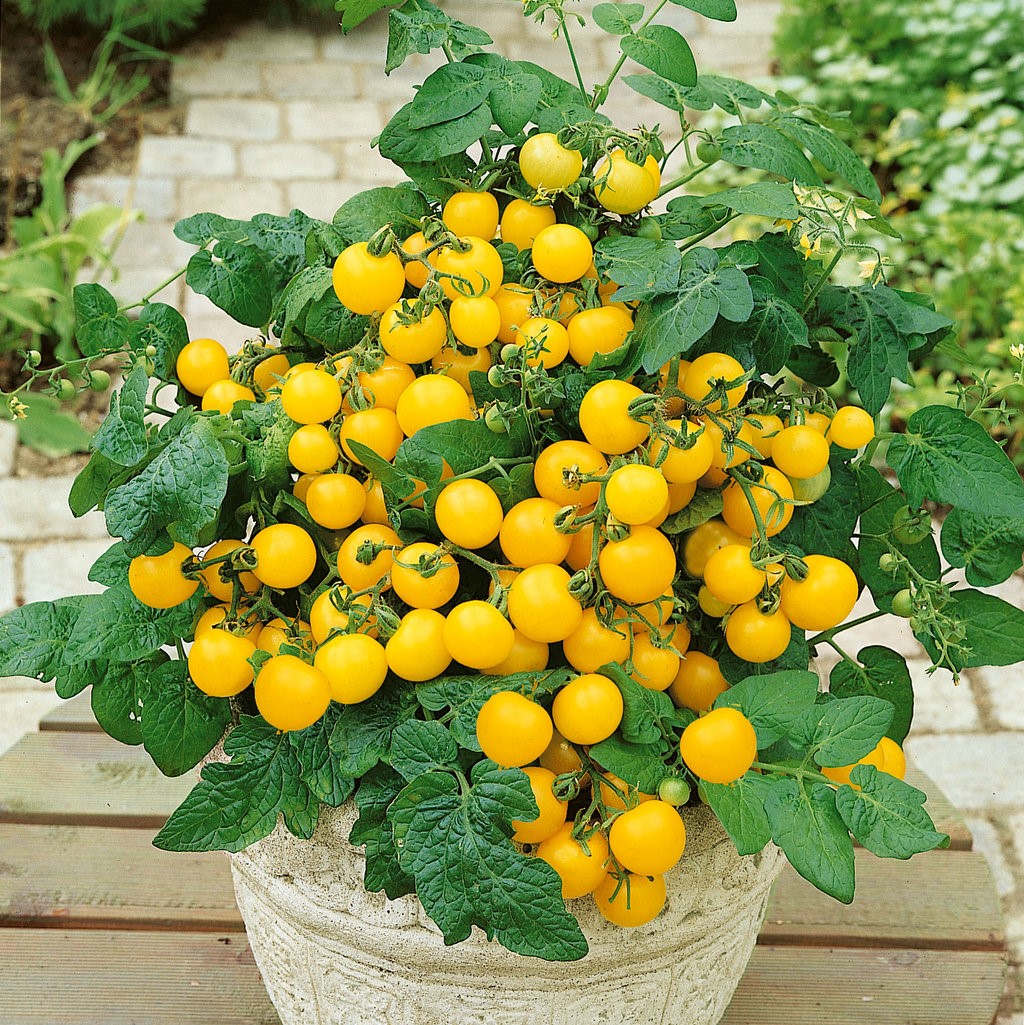How to Grow Tomatoes in Pots - The Ultimate Guide from Proven Winners®
One of the most anticipated rites of summer is harvesting the first homegrown tomato. Even if you have limited outdoor space, you can still grow tomatoes in containers on a deck, patio or apartment balcony.
Order tomato seeds and plants online and we'll ship them right to your door.
![]() If you’ve never grown tomatoes in pots, it’s not as hard as you might think. All you need is a spot that gets lots of sun to get started. By choosing the right sized container, providing a rich growing medium, and giving your plants plenty of water and nutrients, you can be well on your way to enjoying your own homegrown tomatoes.
If you’ve never grown tomatoes in pots, it’s not as hard as you might think. All you need is a spot that gets lots of sun to get started. By choosing the right sized container, providing a rich growing medium, and giving your plants plenty of water and nutrients, you can be well on your way to enjoying your own homegrown tomatoes.
Far superior in flavor to store-bought tomatoes, these delectable fruits are a favorite at picnics and summertime barbecues, as an accompaniment to grilled burgers or a healthy addition to fresh salads. Impress family and friends at your next outdoor gathering by offering this tasty treat!
GROWING TOMATOES IN POTS
Light
Tomatoes are sun lovers that thrive with lots of light and warmth. Choose a site that receives at least 6-8 hours of full sun a day throughout the growing season.
Soil
Use a high-quality soilless potting mix, which can contain perlite, vermiculite, peat moss, bark or coco coir, all of which help to lighten the soil. Garden soil is too heavy and compacted for container use, preventing air, water and nutrients from reaching the root zone. It may also contain disease organisms that can harm plants.
Proven Winners® Premium Potting Soil contains a superb blend of all the ingredients your tomatoes need to flourish.
Fertilizer
Tomatoes grow quickly and need lots of nourishment to thrive. Though many potting mixes have fertilizer mixed in, supplemental feeding of tomato plants is essential, as nutrients leach out quickly from containers due to more frequent watering.
At planting time, add a slow-release fertilizer to the planting hole according to the package instructions. Use a balanced 10-10-10 fertilizer or one that’s specially formulated for tomatoes. To increase calcium in the soil, you can also add a handful of bone meal to the planting hole, which will help to prevent blossom end rot. Once plants begin to set fruit, supplement with an water-soluble fertilizer every 1-2 weeks.
Use Proven Winners® Continuous Release Plant Food to support your tomato plants through all stages of growth.
BEST TOMATOES FOR CONTAINERS
Tomatoes are classified into three basic groups. Indeterminate tomatoes have a larger vining habit, producing fruit throughout the growing season. Determinate tomatoes have a compact bushy habit and produce fruit over a shorter amount of time. A small percentage of tomato varieties are semi-determinate, which are more compact varieties that produce fruit through the growing season.
For containers, choose determinate or semi-determinate tomato varieties that will stay smaller, which includes patio and dwarf forms. Consider what types of tomatoes you like to eat, which can include large slicer , salad, pear, grape, plum or cherry tomatoes.
Try any Proven Winners® selection from our Tempting Tomatoes® series:
PLANTING TOMATOES IN POTS
Tomatoes can be grown from seed or nursery-grown starts. There are benefits to each method.
From seed
The advantage of growing tomatoes from seed is that you can grow heirloom and other unusual varieties that may be hard to find at local garden centers. Because tomatoes have a long growing season, seeds should be started indoors 6-8 weeks before the average last frost date in your area. Use seed starting trays and potting soil specially formulated for seed starting.
- Plant seeds 1/4 inch deep and keep soil evenly moist until germination in 7-14 days. Indoor temperatures should be at least 70 degrees F.
- Place seedlings in ample window light or under grow lights for 16 hours a day.
- Apply a liquid fertilizer once a week at half strength, once plants develop the first set of true leaves.
- Transplant outdoors when plants are 6-10 inches tall.
For easy fool-proof seed starting, try Proven Winners® Seed-Starting Eco-Pots. These self-feeding biodegradable pots can be planted directly into the ground without disturbing the roots, which will encourage healthier development. Plus, Eco-Pots are environmentally friendly, safe for waterways and help to eliminate landfill waste.
For even more convenience, try our Tempting Tomatoes® seed collection, which comes with a set of Eco-Pots.
From starts
Tomato starts are easier than growing from seed, as they require less work and are ready to plant in the ground. Unlike most plants, tomatoes can develop roots along any part of the stem that is submerged under the soil.
- Dig a hole in the potting soil that is deeper than the root ball and mix slow-release fertilizer into the bottom according to instructions.
- Gently tease out roots if potbound and place the root ball into the planting hole up to the first set of leaves. This will encourage better root development and stronger support.
- Fill in the hole with potting soil and water well.
Our exclusive Tempting Tomatoes® varieties are available as 4-inch plants for shipping in spring.
When to plant tomatoes outdoors
Tomatoes are warm-weather plants that need lots of heat and light to grow their best. Placing plants outdoors when it’s too cold can result in foliage damage and stunted growth. Wait until nighttime temperatures are consistently 55 degrees F or above to plant tomatoes outdoors in containers. Ideal daytime temperatures range between 70-90 degrees F.
Tomato varieties have different “days to maturity,” which refers to the number of days from planting to harvest. This can range from as short as 50-65 days to as long as 100 days. To make sure fruits have enough time to ripen, determine the average first frost date in your area. If the amount of days until your average first frost date is more than the number of days to maturity, there’s still time to plant. In colder regions, choose early-season varieties that take less time to mature to ensure a successful harvest.
Mulch
After planting, mulch the soil surface with 1-2 inches of organic matter such as straw, shredded bark or compost, which will help retain moisture and suppress weeds.
Support
Tomato plants need extra support to stay upright and bear the weight of the fruits. Set a tomato cage directly into the pot at the time of planting to avoid disturbing roots later on. Other forms of support include wooden stakes, trellises or fencing.
Harvesting
To develop the best flavor, allow fruits to fully ripen on the plant. Pick fruits that are slightly soft to the touch, but not mushy. Some varieties can be susceptible to fruit cracking if left on the plant for too long, while overripe fruits may drop to the ground. Don’t refrigerate freshly picked tomatoes, as this can result in a loss of flavor.
 FAQ’s
FAQ’s
Can you grow tomatoes in a pot?
Tomatoes can thrive in pots as long as they are grown in high-quality potting soil and receive plenty of sun, water and fertilizer.
What size pots do tomatoes need to grow? How deep?
Tomatoes are vigorous growers that need lots of room for roots to spread out. Containers should be at least 5 gallons or 12 inches wide and deep, though bigger is better. For maximum production, containers that are 10 gallons or larger are ideal, especially for bigger tomato varieties. Ceramic or plastic pots will retain moisture better than terra cotta. Make sure there are adequate drainage holes in the bottom.
For a decorative touch that also makes growing tomatoes easier, try Proven Winners® AquaPots®. These high-quality self-watering pots deliver a constant source of water while providing plenty of room for tomato plants to grow and thrive.
How many tomato plants can be grown in each pot?
Since tomatoes develop an extensive root system and are heavy feeders, each plant needs its own separate pot.
How often should I water my tomato plants in pots?
Proper watering is one of the most crucial aspects to growing tomatoes in pots. Plants need plenty of water, especially as they grow larger and develop fruit. Soil in containers warms up and dries out more quickly than in the ground. During hot weather, plants may need watering once or twice a day.
The goal is to keep containers consistently moist but not soggy. Too little water will stress plants, leading to stunted growth and a reduced harvest. Sporadic watering can cause blossom end rot or cracked fruit. To minimize evaporation and prevent foliar diseases, water early in the day. Use a watering wand to deliver water around the base of the plants, taking care not to splash the foliage. Water slowly and thoroughly to encourage a deep root system.
To simplify watering chores, try Proven Winners® self-watering AquaPots® or install our WaterWise® drip irrigation system.
Want to learn more?
Proven Harvest® collection
5 Tips for Growing Edible Plants in Small Spaces



 Garden Treasure
Garden Treasure Goodhearted®
Goodhearted®

